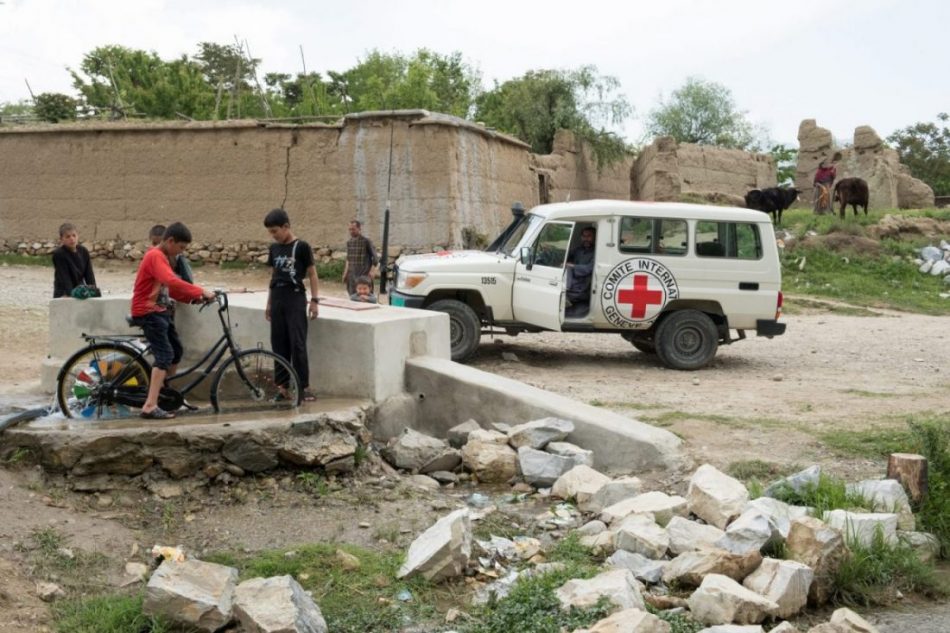Humanitarian responses need to change as wars get longer
Posted By David Tuck on December 9, 2020 @ 14:45

In Afghanistan, the milestones of Sheringul’s life have been marred by conflict. There are weddings and birthdays marking the passage of time—but also injuries, deaths and displacement against a backdrop of conflict spanning decades. Sheringul married in 1979, the first year of the Soviet–Afghan War. In 1992, she fled to Pakistan. She lost a daughter due to limited medical access. Her son lost a leg to a suicide attack. Eventually, she returned home. Forty years on, she now works as a vocational trainer for the International Committee of the Red Cross. The people of Afghanistan still live in conflict.
Sheringul’s story reflects a troubling feature of contemporary conflict. Wars are longer. They are increasingly ever-changing, complex and intractable. As an organisation that helps people caught in conflict, the ICRC has spent an average of 42 years in each of its 10 largest operations—from Yemen to South Sudan. We have worked in Afghanistan since Sheringul married in 1979. Next year will mark a decade of conflict in Syria.
More than two-thirds of the ICRC’s operating budget goes towards helping people caught in long-running wars. Our work in protracted conflict [1] now represents the bulk of our humanitarian efforts around the world. The nature of this challenge requires us to rethink how we approach our work.
In the latest edition of the International Review of the Red Cross [2], the impact of protracted conflict on communities—and on the humanitarians who help them—is put under the spotlight.
Protracted conflicts are strange beasts, unique and varied in character. They have no precise legal definition. The term can be traced back to political scientist Edward Azar, who framed it around tensions between social identities [3]. Yet humanitarian organisations like the ICRC witness the impact of this abstract term in very real ways every day. Protracted conflicts can be episodic, cyclical, ‘frozen’ or long-lived insurgencies. They can be longstanding occupations or wars at low simmer, oscillating between resolution and relapse. Their defining characteristic is gradual devastation.
The recent flare-up in the Nagorno-Karabakh conflict [4] is just one example. Protracted conflicts also require humanitarians to work according to twin timelines: providing urgent relief, alongside meeting longer-term needs. They require us to rethink how we fit into the ‘triple nexus [5]’ of humanitarian, development and peacekeeping work at the local and global levels. The conflict requiring this response is almost Sisyphean in scale.
To understand the devastation caused by protracted conflict, examine its impact in cities. This is where the human cost of drawn-out wars is felt most acutely. In the grips of protracted conflict, a city’s essential services begin to deteriorate. The people who rely on them suffer. Education, infrastructure, health care and hygiene all feel the constricting effects of constant conflict. For those among the civilian population who are already especially vulnerable to the effects of violence, protracted conflict only exacerbates the risks. Children may miss years of school. People living with disability [6] may not have access to the opportunities they need to thrive. If wars should be exceptional, the risk with protracted conflicts is that they become normalised—lasting not just years but generations. They become a tragic part of life.
The effects of protracted conflict are cumulative. Fallout from consecutive attacks compounds over time. This sort of ‘fast and slow’ violence hits civilians hardest. In a report [7] last year looking at the challenges facing international humanitarian law—or the law of war—the ICRC identified the needs of civilians caught in increasingly long conflicts as a priority issue. And it’s not limited to those in cities. People who are detained can be the most vulnerable to the effects of conflict in any society.
Wars seemingly without end can lead to detention that appears indefinite. Likewise, as a conflict becomes protracted so does displacement. Temporary camps for people displaced by conflict can turn into ad hoc cities, where thousands of people may end up living for years. At the end of 2019, there were more than 50 million internally displaced people worldwide. Of these, close to 46 million were displaced due to conflict—the highest figure ever recorded. Durable solutions to displacement, including voluntary returns or local integration and resettlement, should be prioritised. But conflict without end only makes this task harder.
Protracted conflict demands a paradigm shift in how we approach our humanitarian work. For the ICRC, longer wars mean longer periods of time spent on the ground providing humanitarian assistance. Being uniquely situated as humanitarians in drawn-out conflicts means we need to strive for coherence and complementarity with other members of the ‘triple nexus’.
The idea of sustainable humanitarian action is how the ICRC encapsulates its response to these new realities of conflict. This is humanitarian action that is both smart and adaptable, where relief operations can also serve as launch-pads for longer-term programs. It encourages us to strengthen and diversify the way we work with partners and highlights the need for sustained and predictable programming as well as multi-year financing. As warfare continues to change, this is how we ensure humanitarian action remains effective and relevant. This is how we ensure we can work with communities—like Sheringul’s—to help those who need it most.
Article printed from The Strategist: https://www.aspistrategist.org.au
URL to article: https://www.aspistrategist.org.au/humanitarian-responses-need-to-change-as-wars-get-longer/
URLs in this post:
[1] protracted conflict: https://international-review.icrc.org/reviews/irrc-no-912-protracted-conflict
[2] International Review of the Red Cross: https://international-review.icrc.org/
[3] identities: https://international-review.icrc.org/articles/protecting-right-life-protracted-conflicts-ir912
[4] conflict: https://www.icrc.org/en/document/nagorno-karabakh-conflict-icrc-strongly-condemns-latest-surge-violence-civilian
[5] triple nexus: https://international-review.icrc.org/articles/qa-icrc-and-the-humanitarian-development-peace-nexus-discussion-ir912
[6] disability: https://international-review.icrc.org/articles/protracted-conflicts-enduring-legacy-endless-war-ir912
[7] report: https://www.icrc.org/en/document/icrc-report-ihl-and-challenges-contemporary-armed-conflicts
Click here to print.